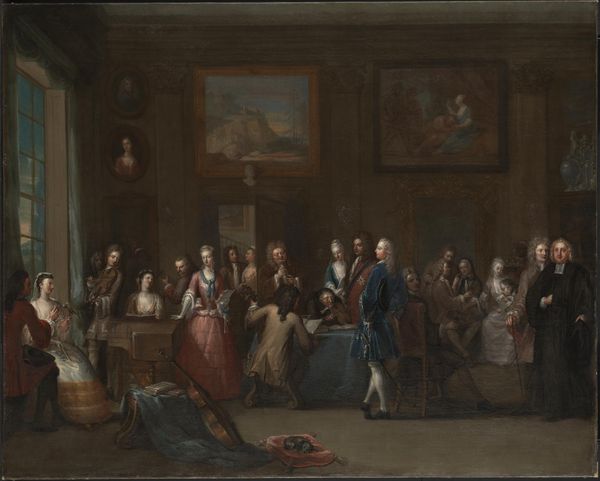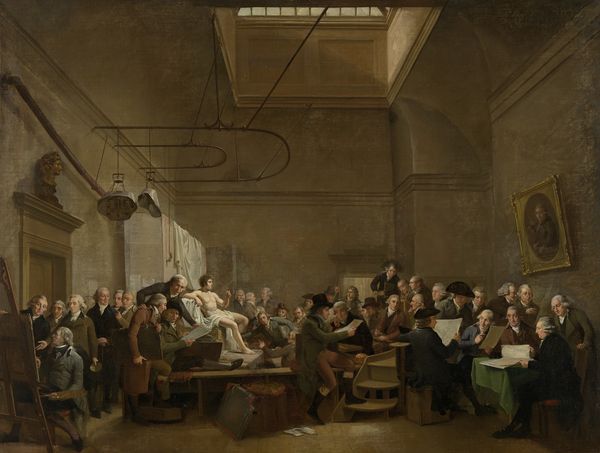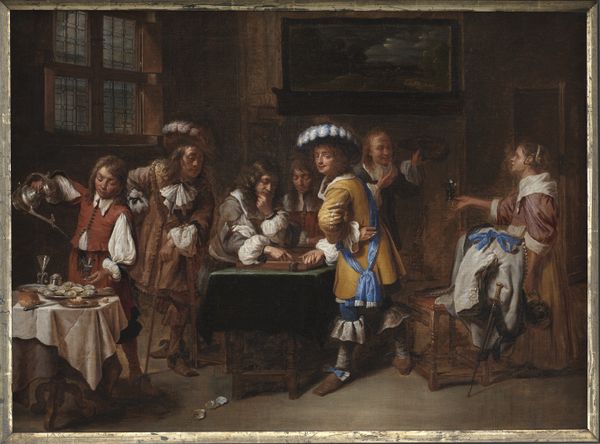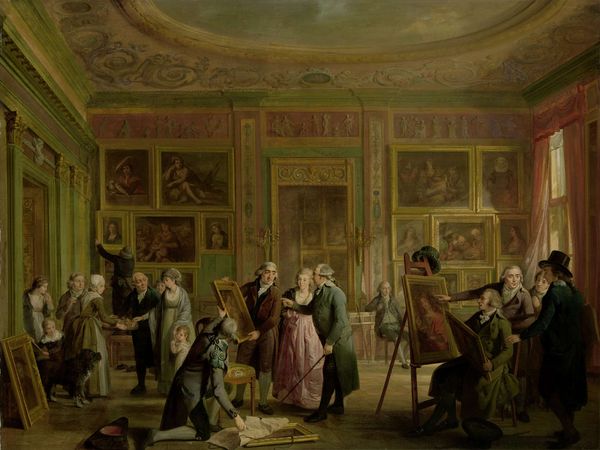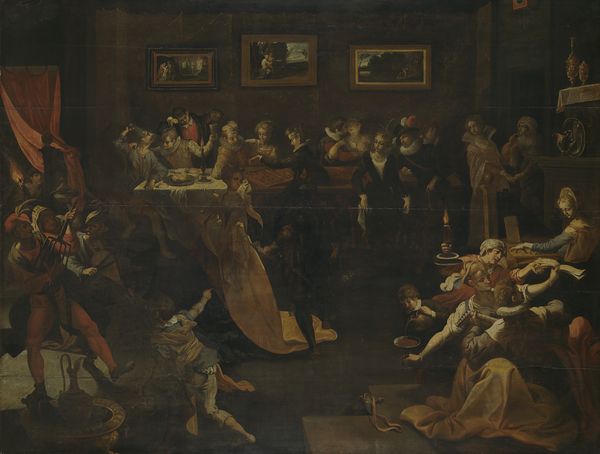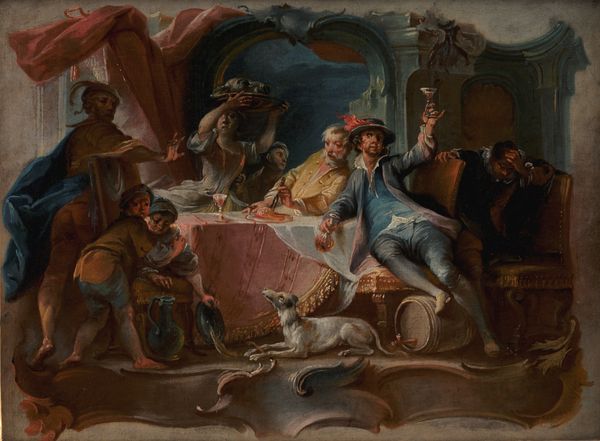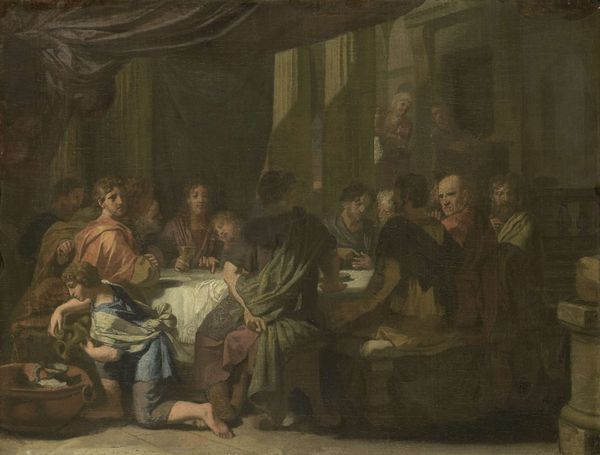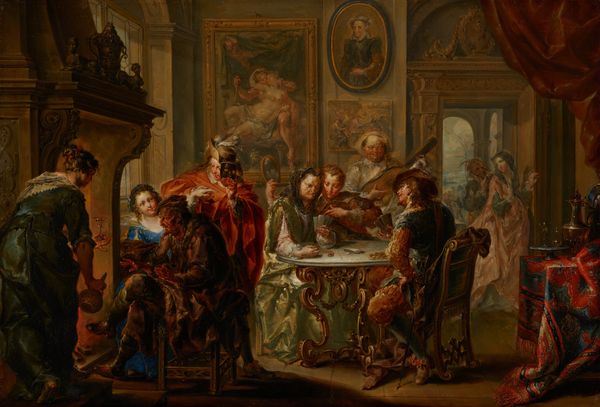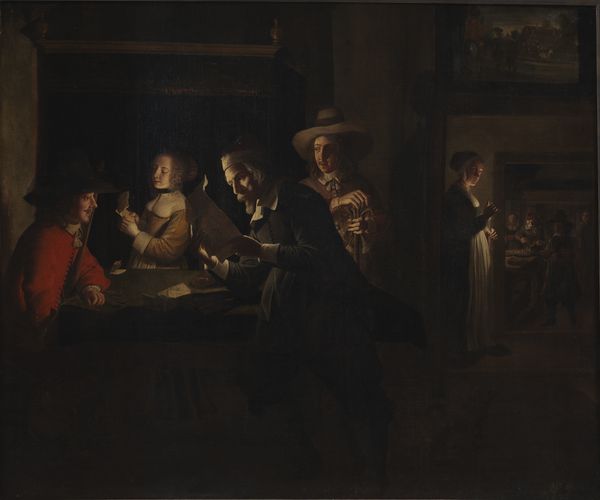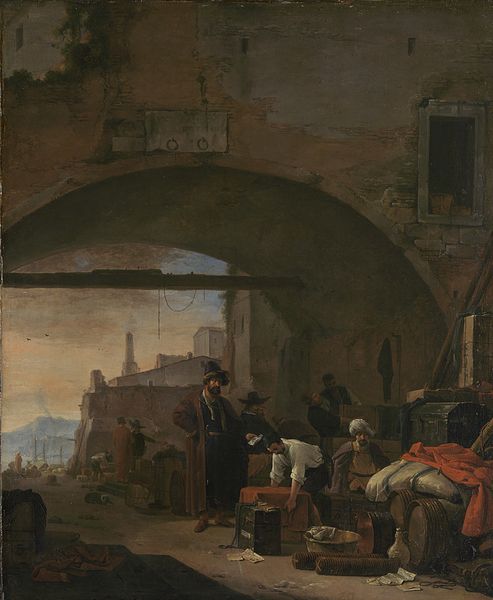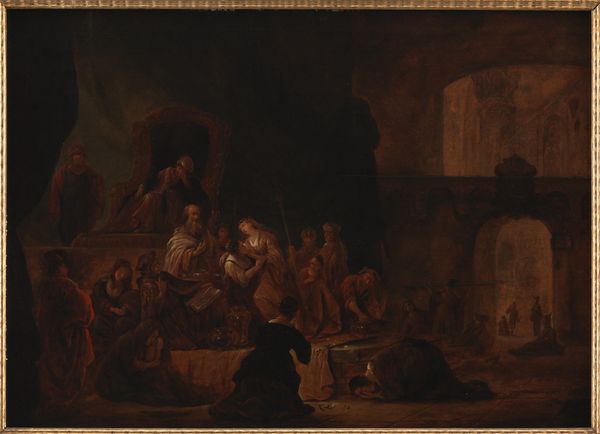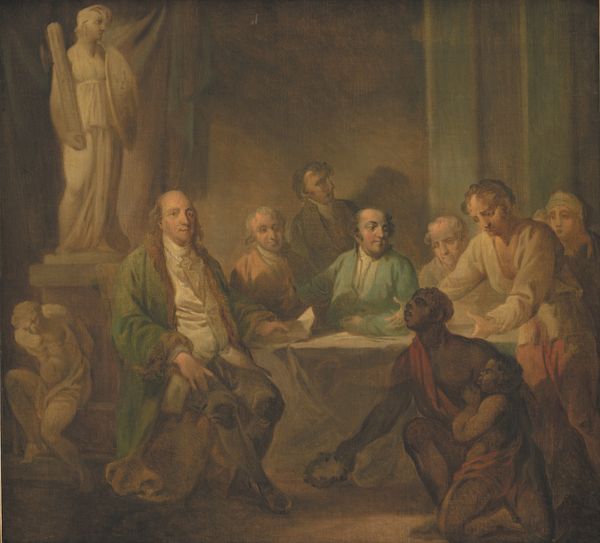
painting, oil-paint
#
portrait
#
water colours
#
painting
#
oil-paint
#
dog
#
figuration
#
group-portraits
#
romanticism
#
men
#
cityscape
#
genre-painting
#
brown colour palette
#
realism
Dimensions: 6 3/8 x 8 5/8 in. (16.2 x 21.9 cm)
Copyright: Public Domain
Curator: "The Billiard Room," dating from 1811-1830 by Nicolas Antoine Taunay, offers an intriguing glimpse into leisure in a bygone era, skillfully rendered with oil paints. Editor: My initial reaction is that this feels rather…dim. Despite the light filtering through the windows, a pervasive gloom hangs over the scene. The painting almost vibrates with the muted energy of hushed conversations. Curator: Yes, the subdued palette is immediately striking. The limited range of browns, grays, and muted blues lends a certain gravitas to a scene that one might expect to be more boisterous. Consider, too, how the light is carefully controlled, directing our attention to the players around the billiard table at the composition's heart. Editor: Absolutely. The arrangement of the figures, bathed in a soft glow, creates a compelling focal point, drawing our gaze into the heart of the action. I also observe that, by placing a sculpted figurine of an angel above the door, this seemingly "regular" moment may point to social elitism or class, no? Curator: Precisely. The inclusion of classical elements – that very figurine of an angel which is placed above the doorway – infuses a sense of intellectualism. The figures here are not merely engaged in recreation; they are participating in a pastime steeped in a very certain cultural cachet and masculine socialization. Editor: I see the table almost as a stage, with all of these men poised around it like players. Even the small dog seems like a curated addition to this masculine theater, its breed likely signaling a certain societal status, a symbolic footnote to this social tableau. It really illuminates the curated experience of "leisure" in that historical milieu. Curator: Indeed, Taunay uses spatial organization to suggest the rigid social boundaries that operated within 19th-century society. From an aesthetic viewpoint, Taunay's treatment of texture also elevates the painting. The subtle gradations in the fabrics of clothing, the sheen of the polished billiard table, the intricate brushstrokes evoking wood and light are captivating. Editor: In thinking about the artist and his body of work, it seems this image does offer us, as a record, a very specific and limited portrait of early 19th-century cultural experience, no? It underscores who was privy to luxury and, even more broadly, highlights how power structures permeate and inform everyday interactions. Curator: Precisely. Observing Taunay’s manipulation of color and line, and even considering the artist's life offers us a much richer understanding of artistic expression that reaches across eras and cultural frameworks. Editor: Agreed. It really underscores the interplay between artistic decisions, how those compositional strategies echo the complex relationship between artist, artwork, and viewer across different histories.
Comments
No comments
Be the first to comment and join the conversation on the ultimate creative platform.
